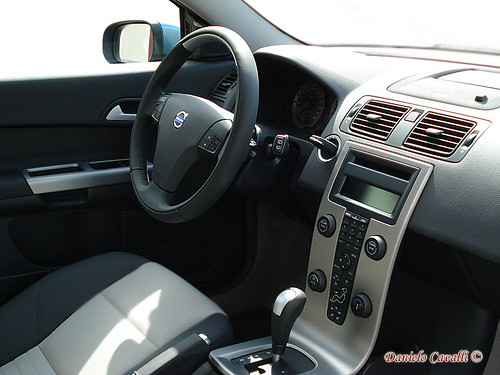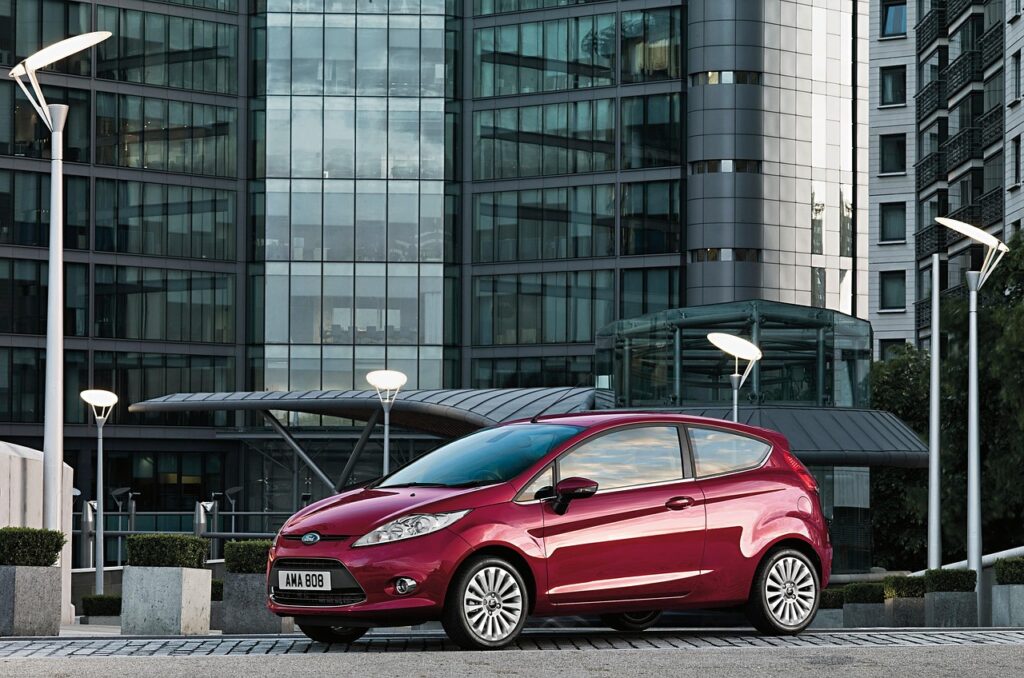
Alright, car fam, buckle up because we’re about to take a wild ride down memory lane! Hot hatchbacks, these glorious little pocket rockets, are truly special treats that pop up once in a blue moon. While a lot of the truly wild and interesting metal was born and mostly stayed in Europe, we here in the United States weren’t entirely left out in the cold. Automakers like Ford, Mazda, Subaru, and Hyundai definitely smiled down on us, blessing our shores with some truly U.S.-spec options to take home, proving that driving enthusiasm is very much alive and kicking!
What makes a hot hatch so utterly irresistible? It’s simple, really. You’re looking at a car that unapologetically gives up a bit of traditional practicality for an explosive, giggle-inducing performance package, all wrapped up in a compact, often unassuming body. This duality is pure magic! Think about it: you get the added bonus of serious sleeper car-status. Nobody expects hoonery to erupt from something sized and shaped like your everyday economy car, and honestly, that’s where the beauty of it all lies.
So, if you’re a specific type of person – the kind who values character, agility, and a sneaky punch of power over just blending in – then you’re in for a treat. We’re diving into some of the most standout, slightly ‘awkward’ hot hatches from the past couple of decades (and a few legendary OGs), celebrating the fact that they were sold here at all. Get ready to fall in love all over again, because these driver favorites are ready for their close-up!
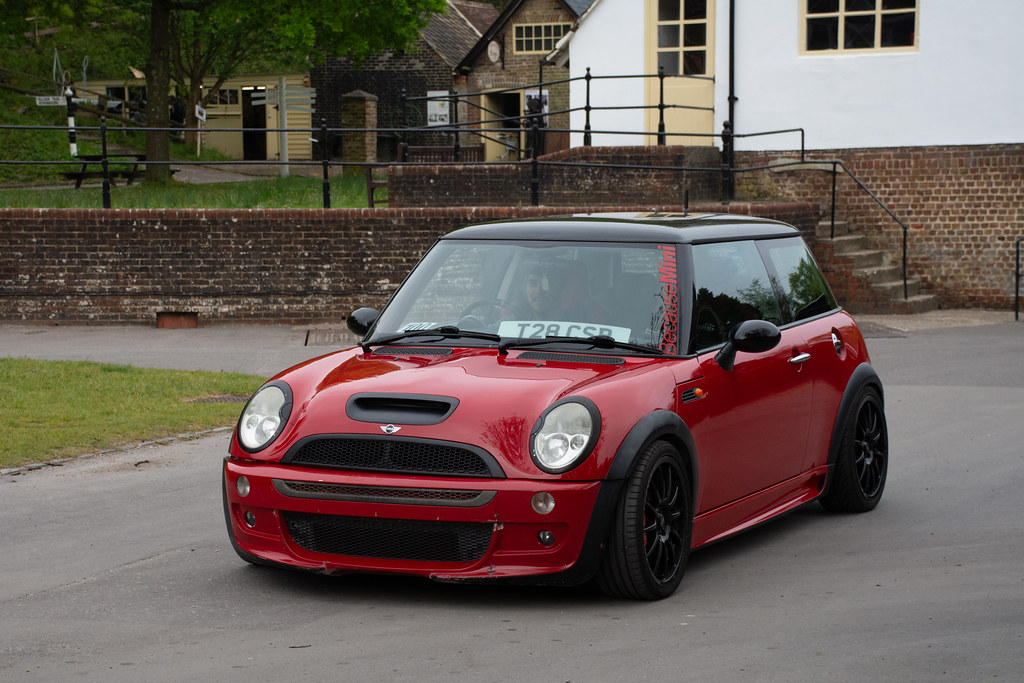
1. **2002 Mini Cooper**Where would we even be without the plucky charisma of the original Mini Cooper? Honestly, *The Italian Job* would be a far less interesting film, and our roads a whole lot duller, that’s for sure. In 2002, the Mini Cooper made a triumphant return, reborn as a thoroughly modernized model. It was a completely fresh take, sharing virtually nothing with its predecessor save for that iconic basic silhouette, the beloved name, and the spirit of its execution. BMW had stepped in to steer the Mini ship, and for the most part, they’ve done a stellar job.
While today’s Mini might feel a bit pricey for the compact package you’re getting, it’s still undeniably brimming with fun and surprisingly spacious inside given its petite footprint. But for this list, we’re specifically shouting out that 2002 model. It was a masterpiece of relative simplicity and pure sportiness, nothing more, nothing less. Imagine this: the 2002 Mini was actually more rigid than the contemporary BMW 3 Series of its time, packing a 1.6-liter four-cylinder engine that produced a respectable 115 hp and 110 lb-ft of torque.
Now, let’s be real, those aren’t exactly the hottest numbers in the ‘hot hatch’ universe, but here’s the kicker: the Cooper absolutely overflowed with MkI VW GTI vibes. Yes, we’re talking about arguably the original hot hatch, despite its modest horsepower! (And for those craving more oomph, there was, of course, a more powerful Cooper S model with 163 hp waiting in the wings.) So, the basic Mini’s biggest flaw might have been its leisurely 9.0 seconds to hit 60 mph, but let’s be clear, this car was never, *ever* about straight-line speed.
It was all about the corners, baby! We reported in a first drive, and I quote, “It corners flat and feels stable in both low- and high-speed maneuvers.” The review continued, “Despite the front-drive configuration, there isn’t the slightest hint of torque steer. The Mini’s overall handling balance is near neutral, and even with the lack of power, the rear end can be rotated around more easily than in most front-wheel-drive cars. This is one of the best handling front-drivers we’ve driven.” Talk about high praise for a car that looks like it belongs on a toy shelf but drives like a proper performance machine!
Car Model Information: 2025 MINI Countryman S
Categories: All set index articles, Articles with short description, Set index articles on cars, Short description is different from Wikidata
Summary: Mini Cooper may refer to:
Performance Cars of the original Mini series with uprated drive train and brakes, called the “Mini Cooper”, made by the British Motor Corporation and also the successors 1961–1971, and 1990–2000
Cars of the Mini (marque), including several different models produced by BMW since 2000 with the “Mini Cooper” title:
Mini Hatch, introduced in early 2000, second generation from 2006, third generation from 2014, and fourth generation from 2024, changing the model name to MINI Cooper.
Mini Clubman (2007–2024)
Mini Countryman
Mini Coupé (2011–2015) and Roadster (2012–2015)
Mini Paceman (2012–2016)
Mini Aceman
Get more information about: Mini Cooper
Buying a high-performing used car >>>
Brand: Mini Model: Cooper
Price: $33,356 Mileage: 14,629 mi.
Read more about: Buyer’s Remorse: 12 Highly Flawed Collector Cars That Mechanics Refuse to Touch
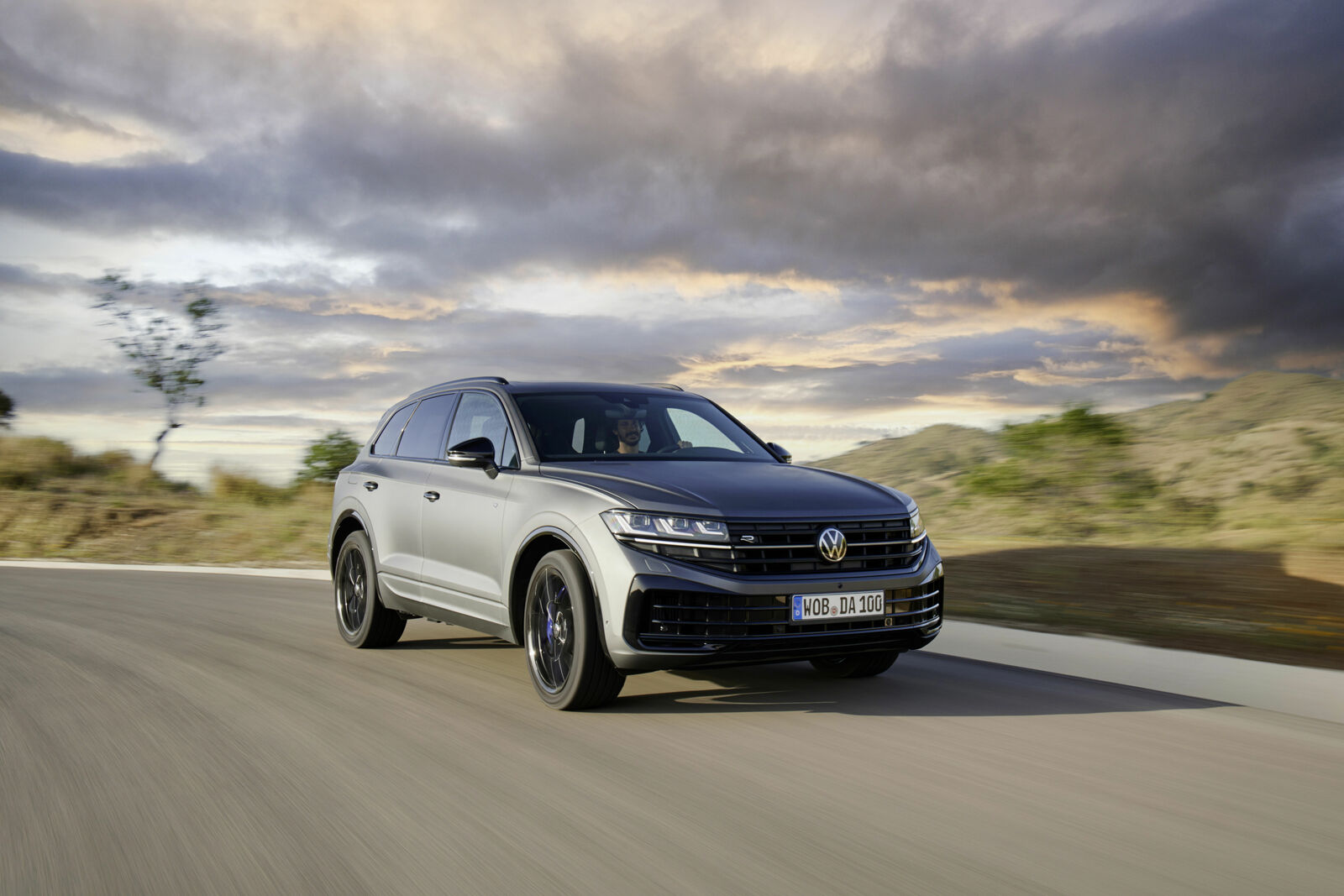
2. **Volkswagen Rabbit GTI Mk1**Before we dive deeper into modern marvels, we absolutely *have* to pay homage to the OG that kickstarted the hot hatch revolution in the U.S.: the 1983 Volkswagen Rabbit GTI. This car isn’t just a classic; it’s practically considered the godfather of American hot hatches, setting the stage for every grin-inducing compact performance car that followed. While the classic Mini Coopers from the ’60s certainly deserve a loud and honorable mention, the Rabbit GTI was the one that truly cemented the concept of a performance hatchback in the American psyche.
Developed to replace the iconic Beetle as VW’s bread-and-butter model, the Golf (and its American counterpart, the Rabbit) quickly became a bestseller worldwide. But it was the sporty GTI model that truly captured the imagination of car enthusiasts globally. The genius of the Golf GTI, and by extension the Rabbit GTI, was its ability to be as practical as a regular Golf but with genuine racing pretensions. It was, in essence, a true high-performance daily driver.
In Europe, the Golf GTI was a bona fide pocket rocket, sprinting to 60 mph in just 9 seconds with its 1.6-liter fuel-injected engine producing 110 hp. It also boasted a 20mm lower suspension and better brakes, all while weighing a mere 1,852 pounds for incredibly agile handling. It came with the right gearbox too—initially a four-speed, later a five-speed manual. Unfortunately for us across the pond, the America-bound Rabbit GTI only made 90 hp, but it did get all those other crucial upgrades.
There was another notable difference: the European Golf had those classic round headlights, while the American Rabbit sported square ones. Both designs looked great, but many would argue the Golf’s round units worked a little better with the GTI’s purposeful, minimalist aesthetic. With its perfect geometric proportions, wider wheel arches, low stance, and sharp profile, the GTI Mk1 absolutely oozed those desirable boy-racer vibes. Add in the iconic red outline on the grille, and you’ve got yourself one of the most instantly recognizable and beloved hatchbacks ever made. It’s easily one of Giorgetto Giugiaro’s best designs and a testament to how awesome a small, peppy car can be.
Car Model Information: 2024 Mazda CX-5 2.5 S Carbon Edition
Name: Volkswagen Golf
Caption: Volkswagen Golf Mk8
Manufacturer: Volkswagen
Production: 1974–present
Class: Compact car
Predecessor: Volkswagen Beetle
Successor: Volkswagen ID.3
Alt: grey car (hatchback)
Categories: 1980s cars, 1990s cars, 2000s cars, 2010s cars, 2020s cars
Summary: The Volkswagen Golf () is a compact car/small family car (C-segment) produced by the German automotive manufacturer Volkswagen since 1974, marketed worldwide across eight generations, in various body configurations and under various nameplates – including as the Volkswagen Rabbit in the United States and Canada (Mk1 and Mk5), and as the Volkswagen Caribe in Mexico (Mk1).
The original Golf Mk1 was a front-engined, front-wheel drive replacement for the air-cooled, rear-engined, rear-wheel drive Volkswagen Beetle. Historically, the Golf is Volkswagen’s best-selling model and is among the world’s top three best-selling models, with more than 35 million units sold as of 2019.
Initially, most Golfs were hatchbacks, with the three-door version being somewhat more popular than the five-door. Other variants include an estate (Variant, from 1993), convertible (Cabriolet or Cabrio, from 1979), and a Golf-based saloon called the Jetta, Vento (from 1992), or Bora (from 1999). The Golf covers economy to high-performance market segments.
The Golf has won awards, including the World Car of the Year in 2009, with the Mk6 and in 2013 with the Mk7. Along with the Renault Clio and the Vauxhall Astra, the Golf is one of only three cars to have won European Car of the Year twice, in 1992 and 2013. The Golf has made the annual Car and Driver 10Best list multiple times. The Mk7 won the Motor Trend Car of the Year award in 2015, and the Mk1 GTI also won the award in 1985. The Mk4 won for the best-selling car in Europe in 2001.
Get more information about: Volkswagen Golf
Buying a high-performing used car >>>
Brand: Volkswagen Model: Rabbit GTI
Price: $25,958 Mileage: 26,006 mi.
Read more about: 13 Iconic 1980s Classics: Unearthing Automotive Treasures Whose Values Are Soaring for Collectors

3. **2008 Subaru Impreza WRX STI**Okay, so how do you take an already good thing – like the legendary Impreza WRX STI sedan – and make it even *better*? You turn it into a hot hatch, duh! Our shores first got a taste of the STI as a sedan for the 2004 model year, but it wasn’t until the following generation that Subaru truly blessed us with the hatchback version. And let me tell you, it was a moment.
Styling-wise, things calmed down a bit here. The hatchback iteration wisely shed the previous version’s absolutely massive rear wing, opting instead for a merely *big* hood scoop, which felt like a subtle nod to maturity without losing any of its aggressive charm. Underneath that slightly tamer exterior, though, was a beast: a turbocharged 2.5-liter flat-four that churned out a very respectable 305 hp and 290 lb-ft of torque. These numbers meant business, allowing it to hit the quarter mile in a blistering 13.4 seconds at 100.5 mph. Oh, and in those days, Subarus still burbled with that distinctive, lovable exhaust note that’s music to an enthusiast’s ears.
Our very first meeting with this STI had us completely smitten. And I mean *smitten*. Here’s what we said: “Following a 350-mile drive in a WRX sedan from Los Angeles to Carmel, site of the press launch of Subaru Tecnica’s superstar, it took a mere 350-foot jaunt in the STI for us to become fully hot and bothered. In light of the WRX, whose controls seem slow, reacting almost a step behind, the STI converses with utter immediacy, be it through the firm, right-now steering, the larger ultraresponsive Brembo brakes, or the more precise short-throw six-speed shifter.”
That’s the kind of immediate feedback and exhilarating connection that drivers crave. The people demanded a hot hatch that could deliver raw power and surgical precision, and Subaru absolutely delivered. This car wasn’t just a hatchback; it was a rallying cry, a statement that you could have serious performance and all-weather capability in a versatile, albeit slightly ‘awkward’ looking, package. A true icon.
Car Model Information: 2024 Mazda CX-5 2.5 S Carbon Edition
Name: Subaru Impreza WRX STI
Caption: 2011 Subaru Impreza WRX STI Sedan (3rd generation)
Manufacturer: Subaru
Production: 1994–2014
Assembly: Ōta, Gunma
Predecessor: Subaru Legacy (first generation)
Successor: Subaru WRX STI
Class: Sport compact,World Rally Car
BodyStyle: Compact Sedan, Coupe, Wagon, Hatchback
Layout: Front-engine design
Engine: Subaru EJ engine
Categories: All-wheel-drive vehicles, All articles needing additional references, All articles with unsourced statements, Articles needing additional references from July 2025, Articles with short description
Summary: The Subaru Impreza WRX STI is a high performance model of the Subaru Impreza compact car line, manufactured by Japanese automaker Fuji Heavy Industries Subaru.
In 1988, FHI created Subaru Tecnica International (STi) as its motorsport division to develop and compete in the FIA World Rally Championship and other motorsports activities. Following the introduction of the first generation Impreza in November 1992 and the following year’s debut of the Group A rally car into the WRC, an ‘STi version’ was made commercially available in January 1994 as a homologation model under FIA regulations. Thereafter, subsequent evolutions dubbed STi Version or simply STI were manufactured and sold alongside the Impreza model lineup initially in Japan only and later in selected world markets. As the STi or STI model was typically the highest spec of the Impreza, it has become popular with performance enthusiasts, tuners and amateur racers in many motorsports disciplines especially rallying and circuit driving.
FHI has released many different models and versions including special limited editions of the WRX STI. However many of these versions were and are only available in the Japanese Domestic Market. Although the concept behind the STI model is taking a base model such as the Impreza or Legacy and further developing it for high performance, STI models fall mainly into 2 categories. The first is a fully developed and tested model with the purpose of homologating it for motorsports which is sold as a street legal road car. The second is a complete car pre-fitted from the factory with parts that are available from the STI catalogue and marketed as a ‘Tuned by STI’ model. Spin-off models with mainly cosmetic additions or alterations are also marketed usually in limited quantities.
Get more information about: Subaru Impreza WRX STI
Buying a high-performing used car >>>
Brand: Subaru Model: Impreza WRX STI
Price: $25,958 Mileage: 26,006 mi.
Read more about: Remember These Rides? 14 Legendary Cars We’re Seriously Begging Automakers to Bring Back from Retirement
4. **2010 Mazda Mazdaspeed 3**Now, let’s be clear: this isn’t to say Mazda isn’t fun anymore – because it totally is! The Miata is still going strong, and the turbocharged versions of the Mazda3 and CX-30 are proper hoots to drive. But there was a magical time when Mazda unleashed a *real* hot hatch, one that was a pure, unadulterated blast: the Mazdaspeed 3. This car had a personality all its own, and it wasn’t afraid to show it.
From its 2.3-liter four-cylinder engine came a hefty 263 hp, all sent directly to the front wheels. And guess what that resulted in? Ludicrous amounts of torque steer! Now, back in its day, this was probably seen as a less-than-favorable characteristic. But looking back now, through those rose-tinted glasses of enthusiast nostalgia, it’s nothing short of charming. Torque steer! How quaint. What wouldn’t we give for a little bit of that character today? It added a layer of wild, untamed fun that’s often polished out of modern cars.
There was just something inherently goofy and utterly engaging about the Mazdaspeed 3 that feels missing from so many cars today, even other hot hatches. It had a raw, slightly unhinged charm that endeared it to anyone who dared to push its limits. Our long-term verdict, published way back in 2011, absolutely nails it: “To the grown-up tuners, these character traits evoked memories of the glory of high school, minus the essentially nonexistent reliability.”
The review continued with such perfect accuracy: “That brace-for-launch acceleration followed by comical torque steer? It’s like your buddy’s second turbo project car—you know, the one following the project you’re not supposed to talk about anymore. The shifter and stiff clutch? Like your first custom short shifter and Stage 3 racing clutch. The exhaust drone? Inspired by every modified car, ever.” The Mazdaspeed 3 wasn’t just a car; it was a tangible piece of automotive rebellion, a gloriously awkward beast that, for a few shining years, absolutely owned the hearts of drivers who appreciated a bit of glorious chaos.
Car Model Information: 2024 Mazda CX-5 2.5 S Carbon Edition
Name: Mazdaspeed
Logo: Mazdaspeed Logo.png
LogoSize: 200
Type: Subsidiary
AreaServed: Worldwide
Industry: Automotive engineering,Motorsport
Products: Automobile
Parent: Mazda
Foundation: 1967
LocationCity: Hiroshima
LocationCountry: Japan
Categories: 1967 establishments in Japan, 24 Hours of Le Mans teams, All Wikipedia articles in need of updating, All articles with unsourced statements, Articles containing Japanese-language text
Summary: Mazdaspeed (マツダスピード, Matsudasupīdo) (often stylized in all-caps as MAZDASPEED) was Mazda’s in-house performance division. The company was a grassroots racing team in Japan. Owned by Mazda Motor Corporation, they built production model vehicles, became involved in motorsports development, and offered performance parts and accessories. Mazda has phased out Mazdaspeed branding and has not offered a Mazdaspeed trim since the 2013 Mazdaspeed3.
Get more information about: Mazdaspeed
Buying a high-performing used car >>>
Brand: Mazda Model: Mazdaspeed 3
Price: $25,958 Mileage: 26,006 mi.
Read more about: The Road Ahead: Ranking 12 Sedans Most Likely to Surpass 200,000 Miles
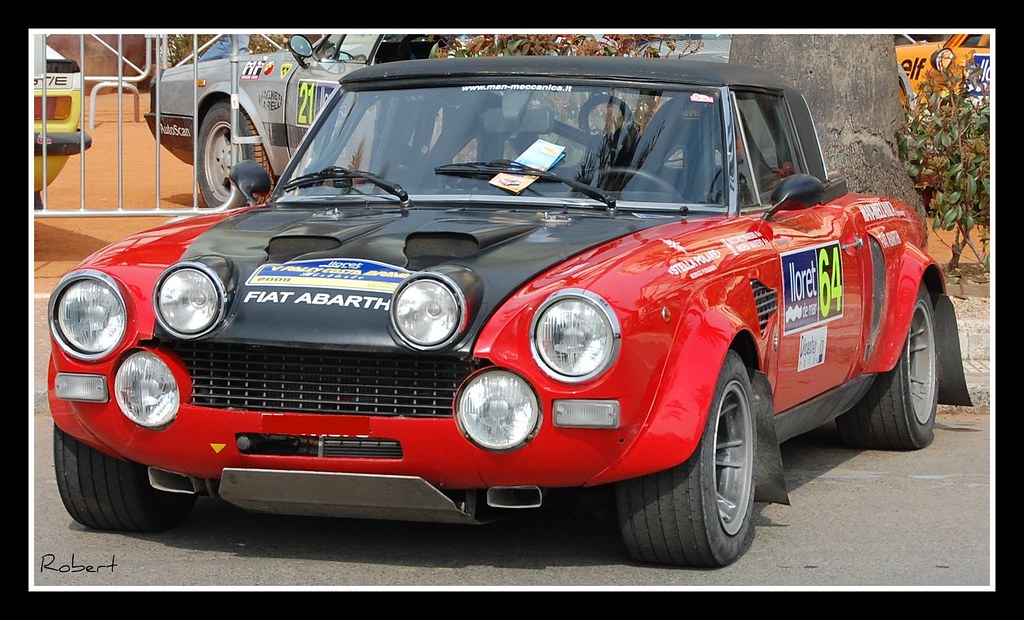
5. **2012 Fiat 500 Abarth**Among all the fantastic machines on this list, perhaps none packed more style, sass, and pure personality into its tiny body than the Fiat 500 Abarth. This little Italian firecracker didn’t just understand the hot-hatch assignment; it *became* the assignment. With its bigger inlet and exit ducts, vibrant red brake calipers, larger brake discs, racing stripes, and that iconic, giant Abarth badge plastered everywhere, it screamed performance and fun before you even turned the key.
Under the hood, a Garrett-blown 1.4-liter engine spat out 160 hp and a healthy 170 lb-ft of torque. All that zest was channeled through an Abarth-exclusive five-speed manual transmission, making every drive an engaging experience. Our first test clocked it hitting 60 mph in a not-terrible 6.8 seconds, with the quarter mile wrapped up in 15.3 seconds at 89.8 mph. But let’s be honest, those numbers barely tell half the story. The real magic? It probably sounded like a completely pissed-off little Ferrari while it did the job, barking and popping with an exhaust note that was far too aggressive for its adorable size.
But the Abarth wasn’t just about the engine’s symphony. It received some serious upgrades to its underpinnings, too. We’re talking upgraded front control arms, fortified front and rear anti-roll bars, and a reinforced rear axle with coiled spring mounts. These weren’t just cosmetic tweaks; they were performance enhancements designed to make this little beast handle like a dream. However, more capable didn’t always mean *more* fun in every scenario.
We reported at the time, and I quote: “With the new setup, the 500 Abarth’s grip is impressive and the car stays much flatter, though the chassis seems a little less playful than before.” The review continued, “Where the 500 Sport can be coaxed into generally neutral behavior with a throttle lift here, a dab of the brakes there, the Abarth seemed intent on understeering its way around our figure-eight course. While the Abarth was unquestionably more capable, we can’t wholeheartedly say it was more fun to throw into a turn.” Even with a slight trade-off in raw playfulness, the Abarth’s sheer character, aggressive looks, and roaring exhaust note made it an undeniable driver favorite, a tiny titan of awkward charm.
Car Model Information: 2024 Mazda CX-5 2.5 S Carbon Edition
Name: Fiat 500
Caption: 1970 Fiat 500 L
Aka: Puch 500
Manufacturer: Fiat Automobiles
Production: 1957–1975,3,893,294 units
Assembly: Turin,Desio
Designer: Dante Giacosa
Class: City car
BodyStyle: ubl
Layout: Rear-engine, rear-wheel drive layout
Doors: Suicide door,Car door#Conventional
Related: Autobianchi Bianchina,NSU/Fiat Weinsberg 500,Vignale Gamine,Autobianchi Giardiniera
Engine: Cubic centimetre,499 cc I2,594 cc I2
Transmission: Manual transmission
Wheelbase: {{convert,1840,mm,in,1,abbr=on
Abbr: on
Length: 2970 mm
Width: 1320 mm
Height: 1320 mm
Weight: 499 kg
Predecessor: Fiat 500 “Topolino”
Successor: Fiat 126,Fiat 500 (2007)
Sp: uk
Categories: 1960s cars, 1970s cars, All Wikipedia articles written in British English, All articles with unsourced statements, Articles containing Italian-language text
Summary: The Fiat 500 (Italian: Cinquecento, pronounced [ˌtʃiŋkweˈtʃɛnto]) is an economy / city car that was manufactured and marketed by Fiat Automobiles from 1957 until 1975. It was sold as a two-door semi-convertible or saloon car and as a three-door panel van or estate car.
Launched as the Nuova (new) 500 in July 1957, as a successor to the 500 “Topolino”, it was an inexpensive and practical small car. Measuring 2.97 metres (9 feet 9 inches) long, and originally powered by a rear-mounted 479 cc two-cylinder, air-cooled engine, the 500 was 24.5 centimetres (9.6 inches) smaller than Fiat’s 600, launched two years earlier, and is considered one of the first purpose-designed city cars.
In 1959, Dante Giacosa received a Compasso d’Oro industrial design prize for the Fiat 500. This marked the first time a Compasso d’Oro was awarded to an automotive manufacturer.
Get more information about: Fiat 500
Buying a high-performing used car >>>
Brand: Fiat Model: 500 Abarth
Price: $25,958 Mileage: 26,006 mi.
Read more about: Beyond the Hype: 14 Underrated Sports Cars Every Enthusiast Should Discover
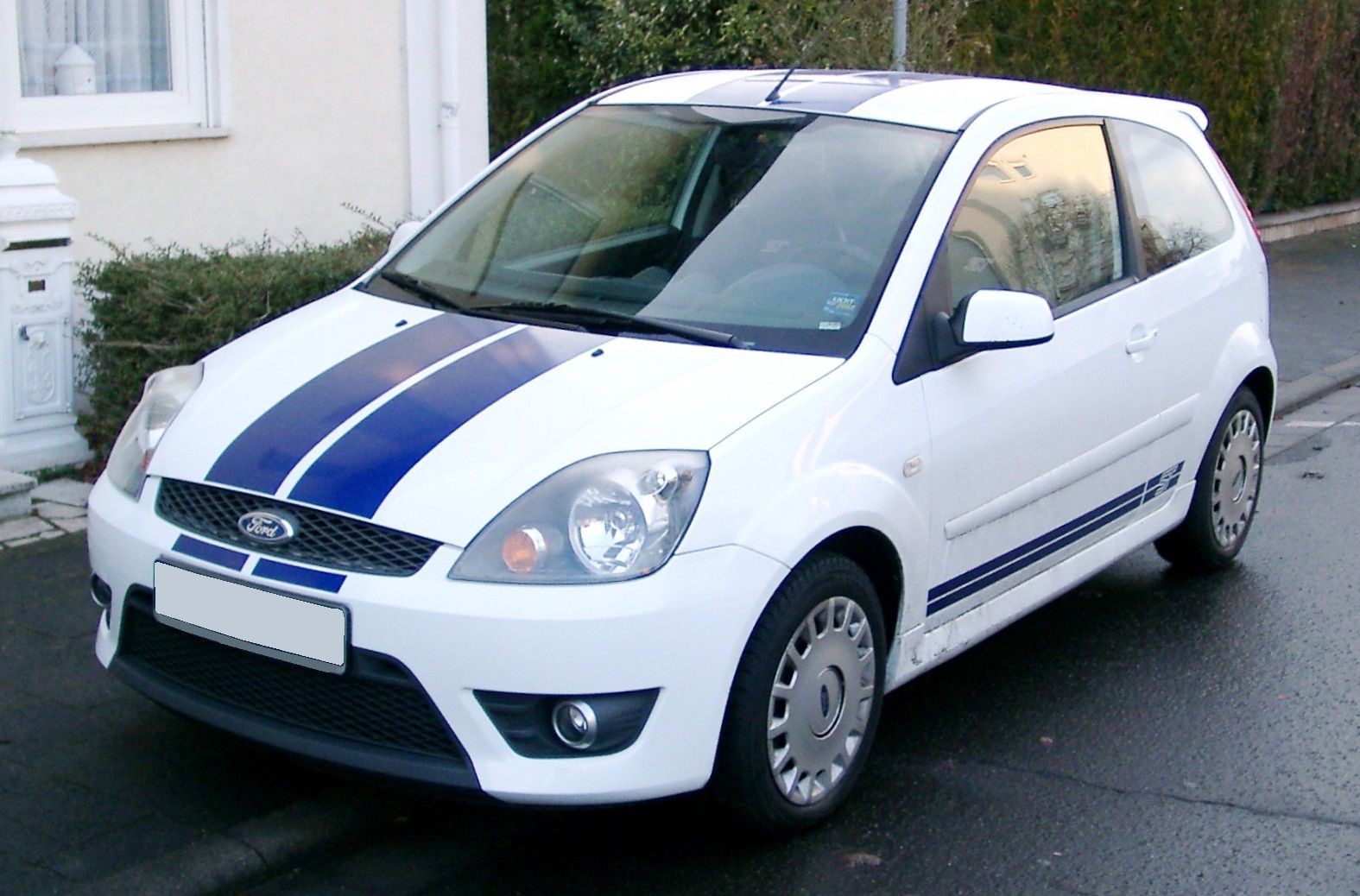
6. **2014 Ford Fiesta ST**Can you believe that just a mere 10 years ago, a truly wonderful and almost unheard-of thing happened? An automaker actually offered *two* hot hatches side-by-side on our market! That automaker was Ford, and the smaller, more mischievous of the two was the glorious Fiesta ST. This wasn’t just a car; it was a lightweight, chuckable master of tomfoolery, designed to put a smile on your face with every twist of the wheel.
Under its hood, the Fiesta ST housed a peppy 1.6-liter turbocharged four-cylinder engine that churned out an impressive 197 hp and a robust 202 lb-ft of torque. And in a move that true enthusiasts adore, a manual transmission was the *only* transmission option. No fuss, no compromises – just pure, unadulterated driving engagement. Despite the car’s petite size, it was surprisingly accommodating, even fitting 6-foot 4-inch editors with relative ease. Performance was no slouch either, with a 0-60 mph time of 6.4 seconds and the quarter mile done in 14.9 seconds at 94.6 mph.
Remember how we harangued about the Mazdaspeed 3’s ludicrous torque steer? Well, despite being a lower-powered, front-drive car, the Fiesta ST had nearly none of that wild wheel-wrestling. From our original first test, the insights were clear: “When you have 197 hp and 202 lb-ft going to the front wheels, two things are expected to be present: torque steer and understeer. Both have decided to ditch class and go smoke behind the portables.” How’s that for an awesome endorsement?
The review continued to praise its road manners: “There’s a slight twisting feeling under hard acceleration, but nothing a small child couldn’t handle.” But the real kicker, the part that truly made the Fiesta ST a legend, was its sublime handling: “As nice as it is not to have torque steer, the lack of understeer — along with the rest of its general on-road behavior—is what really makes the Fiesta ST bring the smiles. The 160.1-inch-long hatch is neutral going into a corner and develops a desire to rotate as the turn progresses, giving it a slightly tail-happy sensation.” This little car proved that you don’t need outrageous power to deliver a truly engaging, fun-to-drive experience. It was pure joy on wheels, making it an instant classic and a definite driver favorite!
Alright, gearheads, if you thought the first six entries were wild, get ready because we’re just hitting our stride! The world of beloved ‘awkward’ hatchbacks is deep, and we’re continuing our exhilarating dive into modern legends and surprising entries that absolutely pushed boundaries. These next six cars weren’t just vehicles; they were statements, delivering unforgettable driving experiences and proving that the enthusiast spirit is very much alive and kicking, even when wrapped in an unexpected package. Let’s crank up the volume and see what other pocket rockets made our hearts race!
Read more about: Ignored No More: Unearthing the 16 Most Underrated Foreign Classic Cars of the 1990s
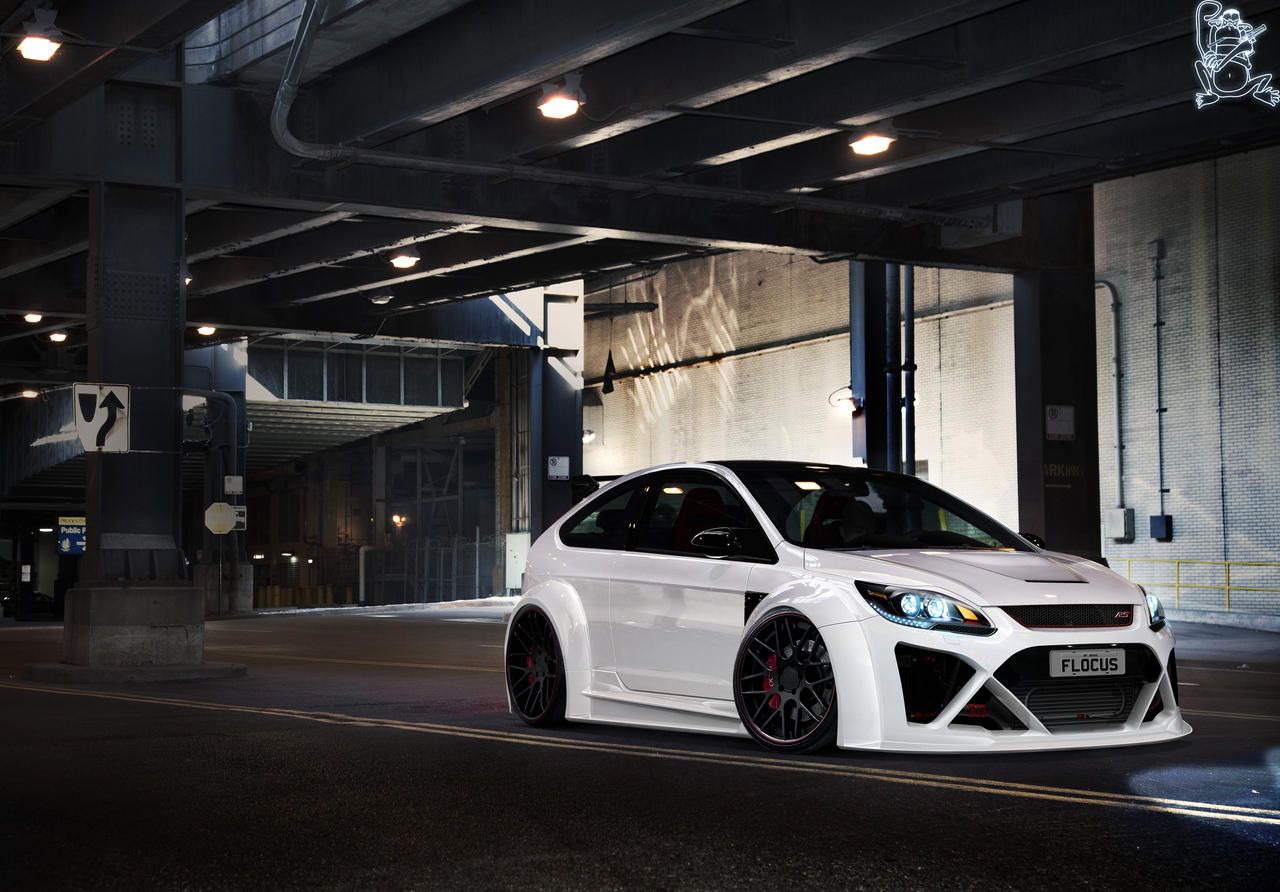
7. **2016 Ford Focus RS**When the Focus RS burst onto the scene, it wasn’t just a car; it was a phenomenon, an absolute mic drop from Ford. Seriously, it was all anyone could talk about, and for good reason! We’re talking all-wheel drive, a mind-blowing 350 hp and 350 lb-ft of torque, a manual transmission that begged to be shifted, and oh, did we mention ‘Drift Mode?’ It didn’t get much hotter, or more gloriously chaotic, than this beast. While its sibling, the Focus ST, was already a blast, the RS was on another level of epicness, embodying raw power with a mischievous grin.
This wasn’t just a pretty face; the numbers backed up the hype. The RS devoured the quarter-mile in a blistering 13.3 seconds at 103.3 mph, and if you blinked, you’d miss its 0 to 60 mph sprint in a mere 4.5 seconds. Beyond the sheer speed, this car held a special place in history: it was the very first RS-branded Ford ever sold in the U.S.! All those years of watching tantalizing European models from afar were over; the forbidden fruit was finally ours to savor.
Now, let’s be real, there were a few early hiccups with some failed head gaskets, but Ford quickly swooped in with a fix in 2018. Despite those minor bumps, people absolutely adored these cars, and with every rip-roaring drive, it was easy to see why. As we proudly wrote in a four-way comparison, “The power the Focus RS’ 2.3-liter engine makes is unbelievable; there’s a touch of lag as you accelerate, but once boost hits, you’re off like a Falcon 9 rocket, with a matching soundtrack to boot.”
That incredible powertrain was paired with a gearbox just as eager to play. Its widely spaced ratios made it a dream for stringing together quick-succesion corners. The pedals might have been a bit tricky for everyday heel-toe maneuvers, but as our team member Scott Evans keenly observed, they were “perfect when you’re hammering the car and deep in the brake pedal.” The Focus RS was a rallying cry, a testament to what happens when an automaker truly lets loose and unleashes a monster.
Car Model Information: 2024 Mazda CX-5 2.5 S Carbon Edition
Name: Ford Focus
Caption: 2018 Ford Focus ST-Line X
Manufacturer: Ford Motor Company
Production: 1998–2025
Class: Small family car
BodyStyle: ubl
Layout: Front-engine, front-wheel drive,Front-engine, four-wheel-drive
Predecessor: Ford Escort (Europe)
ModelYears: 2000–2018 (North America)
Categories: 2000s cars, 2010s cars, 2020s cars, All articles with specifically marked weasel-worded phrases, All articles with unsourced statements
Summary: The Ford Focus is a compact car (C-segment in Europe) manufactured by the Ford Motor Company from 1998 until 2025. It was created under Alexander Trotman’s Ford 2000 plan, which aimed to globalize model development and sell one compact vehicle worldwide. The original Focus was primarily designed by Ford of Europe’s German and British teams. Production of the fourth generation Focus began in 2018 in Germany and China. In 2025, Ford announced that the Focus will no longer be built, in line with an announcement made in 2022.
Get more information about: Ford Focus
Buying a high-performing used car >>>
Brand: Ford Model: Focus RS
Price: $25,958 Mileage: 26,006 mi.
Read more about: Beyond the Page: 14 Essential Insights into Toni Morrison’s ‘Beloved’ That Still Resonate Today
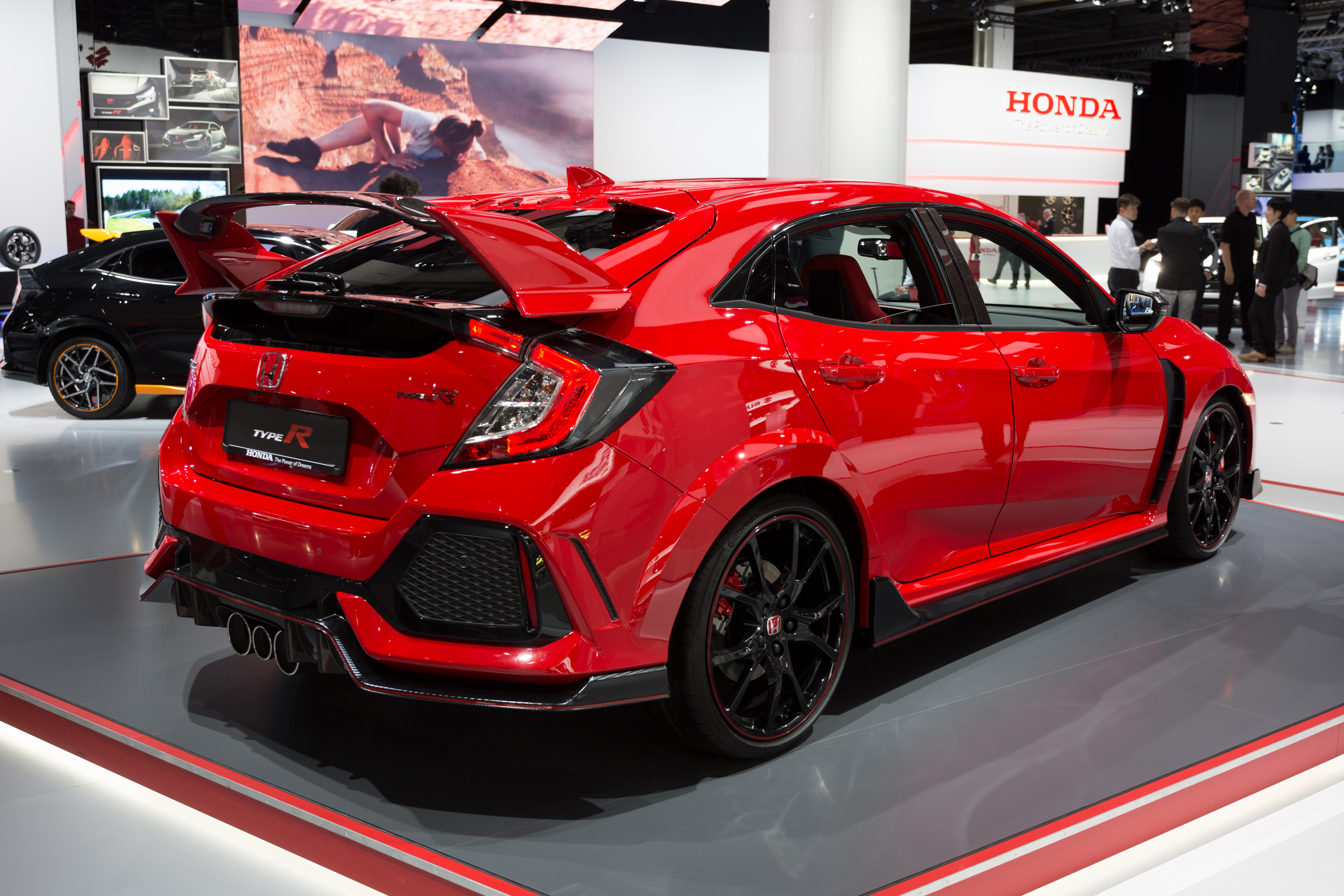
8. **2017 Honda Civic Type R**For what felt like an eternity, a Type R Honda Civic was merely a mythical creature, something we could only gaze at with longing eyes from across the pond. But then, 2017 rolled around, and everything changed! The 2017 Honda Civic Type R landed on our shores with a bang, immediately asserting its dominance. We even argued it was possibly the best front-wheel-drive sports car ever made. That’s a bold claim, but this car absolutely earned it, shaking up the performance world with its precise engineering and electrifying drive.
What made it so special? For starters, it boasted a remarkable lack of turbo lag and virtually no torque steer, a true engineering feat for a front-wheel-drive powerhouse. This allowed the Type R to rocket from 0-60 mph in a blistering 5.4 seconds, tearing through the quarter-mile in 14.0 seconds at 102.5 mph. All this incredible performance was courtesy of a turbocharged 2.0-liter engine, pumping out a mighty 306 hp and 295 lb-ft of torque. Honda meant serious business.
Now, let’s talk aesthetics. That generation’s racy, aggressive design certainly sparked conversations – you either loved it or, well, you had *opinions*. But honestly, whether the styling was your cup of tea or not, you couldn’t deny the sheer, unadulterated performance of the 10th-generation Type R. It stood on its own, proudly proclaiming its track-bred capabilities, even if it looked like it just rolled off a spaceship ready for battle.
Our first test review captured the essence of this magnificent machine perfectly: “On a good back road, it’s a precision instrument; around town or on the highway it is an easy-going cruiser.” The review continued, praising its dynamic prowess: “The Honda turns in on a knife’s edge, absorbing bumps and bruises from the road without upsetting the driver or chassis. Steering is crisp and quick, and throttle response is linear. The Civic Type R’s engine is a little monster, with tons of power, little lag, and a sky-high 7,000-rpm redline, backed up by a Ryan Gosling-slick six-speed gearbox topped by a brushed aluminum knob.” Talk about a car that delivers thrills with surgical precision!
Car Model Information: 2024 Mazda CX-5 2.5 S Carbon Edition
Name: Honda Civic Type R
Caption: Honda Civic (eleventh generation)
Manufacturer: Honda
Production: September 1997 – present
Class: Sport compact
BodyStyle: hatchback
Layout: Front-engine, front-wheel-drive layout
Related: Honda Civic
Categories: 2000s cars, 2010s cars, 2020s cars, All Wikipedia articles written in American English, All articles with unsourced statements
Summary: The Honda Civic Type R (Japanese: ホンダ・シビックタイプR, Hepburn: Honda Shibikku Taipuāru) is a series of hot hatchback and sports sedan models based on the Civic, developed and produced by Honda since September 1997. The first Civic Type R was the third model to receive Honda’s Type R badge (after the NSX and Integra). Type R versions of the Civic typically feature a lightened and stiffened body, specially tuned engine, and upgraded brakes and chassis, and are offered only in five- or six-speed manual transmission. Like other Type R models, red is used in the background of the Honda badge to distinguish it from other models.
Get more information about: Honda Civic Type R
Buying a high-performing used car >>>
Brand: Honda Model: Civic Type R
Price: $25,958 Mileage: 26,006 mi.
Read more about: Unleash Your Inner Tuner: The 13 Best Affordable Cars Under $25,000 to Customize in 2025

9. **2018 Volkswagen Golf R**While the Golf R lineage is long and storied, we’re singling out the Mk 7.5 because, let’s be real, it hit that sweet spot like no other. This iteration represented the absolute best blend of blistering performance and everyday usability, making it a true unicorn in the hot hatch world. It effortlessly balanced being a track-day hero with being a comfortable commuter, a feat many performance cars struggle to achieve. Plus, its infotainment was modern enough without going full touchscreen-only, striking a perfect balance between tech and tactile controls, and it had all the modern safety gear you could want.
Under the hood, this Golf R was packing a serious punch: a 2.0-liter turbocharged four-cylinder engine that churned out a very respectable 292 hp. This translated into serious speed; we clocked it hitting 60 mph in a swift 5.7 seconds. For those fortunate enough to experience it on unrestricted stretches of the German Autobahn, it cheerfully cruised at speeds up to 130 mph – from a Golf! It was a true testament to Volkswagen’s engineering prowess, proving that practicality and pace could coexist beautifully.
In the ongoing debate between the Civic Type R and the Golf R, the VW often emerged as the more civilized, sophisticated choice. Its all-wheel-drive system was a game-changer, offering broader use cases and providing incredible corner-exit traction, making it a joy to drive in almost any condition. Our Euro-spec first drive raved about its refinement: “A broad swathe of midrange torque—the engine pumps out 280 lb-ft from 1,800 rpm to 5,500 rpm—combined with the slick stick-shift and a decent ride, mean the Golf R is smooth and refined to drive.”
Drivers had the power to fine-tune their experience, choosing between Comfort, Normal, and Race modes. But here’s the kicker: even in full-on Race mode, the Golf R never shed its mature demeanor. It might have felt a little more alert, with a touch more vertical body motion and a subtle growl from the exhaust, but it always maintained its composure. This car truly solidified its place as a sophisticated sleeper, offering thrilling performance without ever having to shout about it.
Car Model Information: 2024 Mazda CX-5 2.5 S Carbon Edition
Name: Volkswagen Golf Mk7
Manufacturer: Volkswagen
Production: 2012–2020 (Europe),2013–2020 (China),2015–2020 (Brazil),2014–2021 (Mexico)
ModelYears: 2015–2021 (North America)
Assembly: ubl
Designer: ubl
Class: Compact car
BodyStyle: ubl
Layout: Front-engine, front-wheel-drive,Front-engine, all-wheel-drive
Platform: Volkswagen Group MQB
Related: #Sportsvan,Audi A3#Mk3,Audi TT#Mk3,SEAT León#Mk3,Škoda Octavia#Mk3
Engine: ubl
Motor: 136 PS
Abbr: on (e-Golf)
Battery: 35,8 kWh (e-Golf), 8,7kWh (GTE)
Transmission: ubl
Wheelbase: convert,convert
Length: ubl
Width: convert
Height: convert
Weight: convert
Predecessor: Volkswagen Golf Mk6
Successor: Volkswagen Golf Mk8,Volkswagen ID.3
Sp: uk
Categories: 2020s cars, All-wheel-drive vehicles, All Wikipedia articles written in British English, All articles needing additional references, All articles with dead external links
Summary: The Volkswagen Golf (Mk7) is a C-segment car manufactured by German automobile manufacturer Volkswagen. It is the seventh generation in the Golf series and the successor to the Golf Mk6, and was introduced in Berlin on 4 September 2012, before a public launch at the 2012 Paris Motor Show. Sales in Europe began with the model in November 2012.
Marketed in three-door and five-door hatchback, van, and estate forms, the Golf Mk7 shares the MQB platform with the third generation Audi A3, SEAT León and Škoda Octavia.
In November 2016, Volkswagen presented a facelift of the Golf Mk7. It was replaced in December 2019 by the Golf Mk8, which is built on the MQB Evo platform. Production of the e-Golf and the Golf Variant ended in mid-2020.
Get more information about: Volkswagen Golf Mk7
Buying a high-performing used car >>>
Brand: Volkswagen Model: Golf R
Price: $25,958 Mileage: 26,006 mi.
Read more about: Remember These? 14 Classic Cars From the 1980s That Everyone Forgot About (But Are Now Worth a Fortune!)
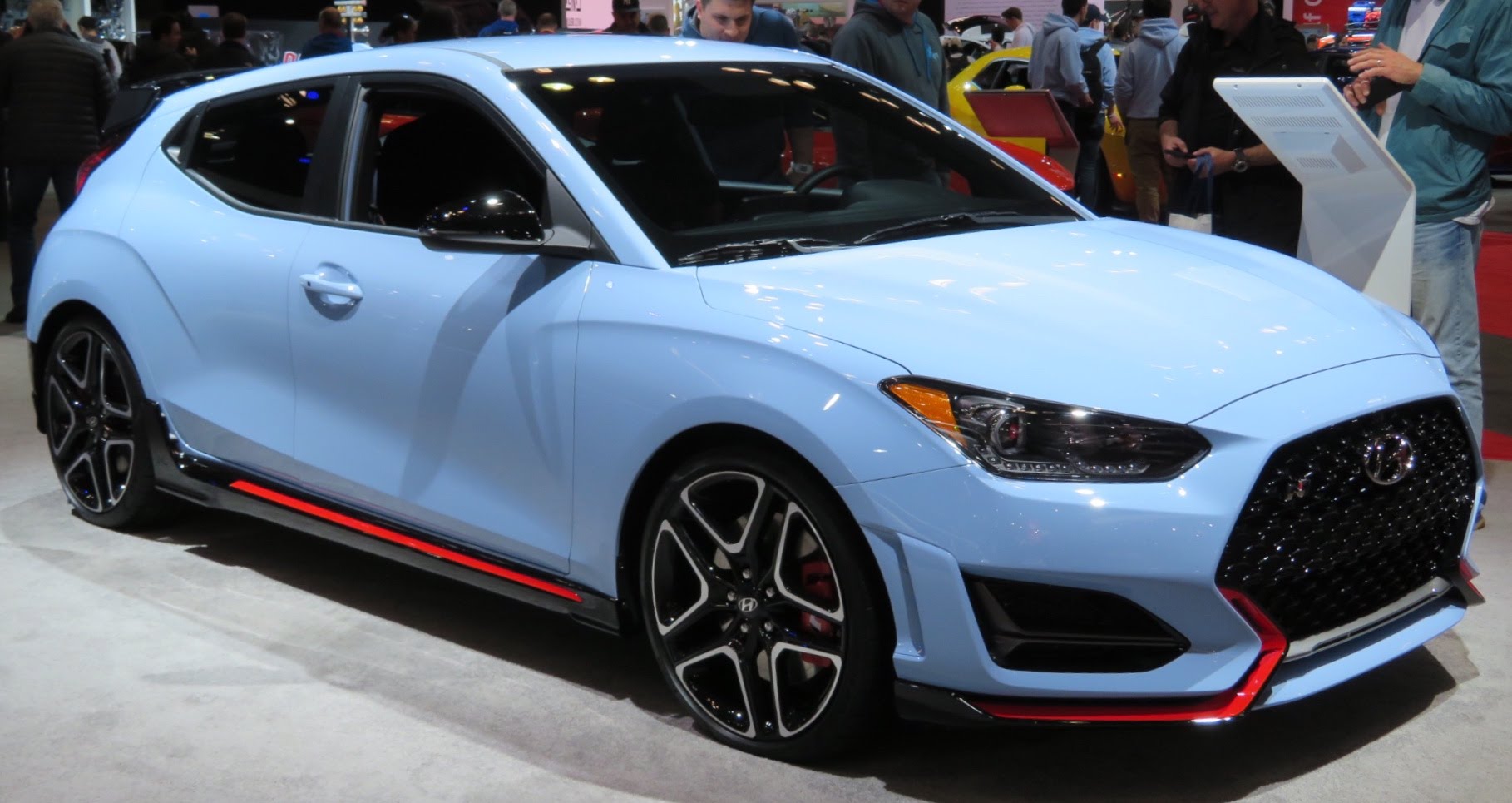
10. **2019 Hyundai Veloster N**Okay, hands up if you saw *this* coming from Hyundai! Yeah, neither did most of us. But bless their hearts, Hyundai absolutely blew us away with the Veloster N, and frankly, the automotive world is all the better for it. This little firecracker burst out of the gate with an unapologetic fury, collecting awards and stealing hearts faster than you can say ‘hot hatch.’ It was funky, it was blue, and perhaps its most charmingly awkward feature: three doors! Talk about standing out from the crowd.
Under its distinctively styled hood, the Veloster N housed a spirited engine, making 275 hp and 260 lb-ft of torque. Driving it was like wrestling a mad hornet’s nest – in the best possible way! While it could definitely settle down when you needed it to, it truly felt happiest when being absolutely thrashed around some twisty backroads, barking and popping with every gear change. Sure, it might not have been as ‘grown up’ as the Civic Type R (lol, we said it!), but its youthful charisma was undeniable, a pure shot of adrenaline.
Our first drive review of this gem captured the sheer joy it delivered: “Step on the gas, and you’ll feel your back push against the seatback as you listen to the snaps and pops from the exhaust. The Veloster N is easy to drive and handles great on twisty roads; the additional welding and increased torsional stiffness (6.9 percent) over the regular Veloster make the N car behave better.” This car was built for smiles, and it delivered them in spades.
We even put it through its paces on the legendary Nürburgring, and it felt right at home: “In the two laps I drove at the ‘Ring, the Veloster N equipped with the Performance Package felt at home.” It’s a genuine shame that the Veloster N is no longer with us in new car showrooms, but if you’re lucky enough to stumble upon one on the used market, prepare yourself for an absolute treat. This quirky, three-door hero truly redefined what we expected from a hot hatch, proving that joy and performance can come from the most unexpected places.
Car Model Information: 2024 Mazda CX-5 2.5 S Carbon Edition
Name: Hyundai Veloster
Manufacturer: Hyundai Motor Company
Production: 2011–2022
Class: Sport compact car
Layout: Front-engine, front-wheel-drive layout
BodyStyle: hatchback
Predecessor: Hyundai Tiburon
ModelYears: 2012–2022
Assembly: Ulsan
Categories: All Wikipedia articles in need of updating, All articles with unsourced statements, Articles containing Korean-language text, Articles with short description, Articles with unsourced statements from May 2018
Summary: The Hyundai Veloster (Korean: 현대 벨로스터, romanized: Hyeondae Belloseuteo) is a compact car which was produced by Hyundai from 2011 until 2022. The car differs from most other hatchbacks with its asymmetrical door configuration, featuring one large door on the driver side and two smaller doors on the passenger side. This configuration is more common on commercial vehicles and minivans.
Get more information about: Hyundai Veloster
Buying a high-performing used car >>>
Brand: Hyundai Model: Veloster N
Price: $25,958 Mileage: 26,006 mi.
Read more about: Buyer’s Regret: 12 Compact and Small Cars That Leave Owners Wishing for a Do-Over
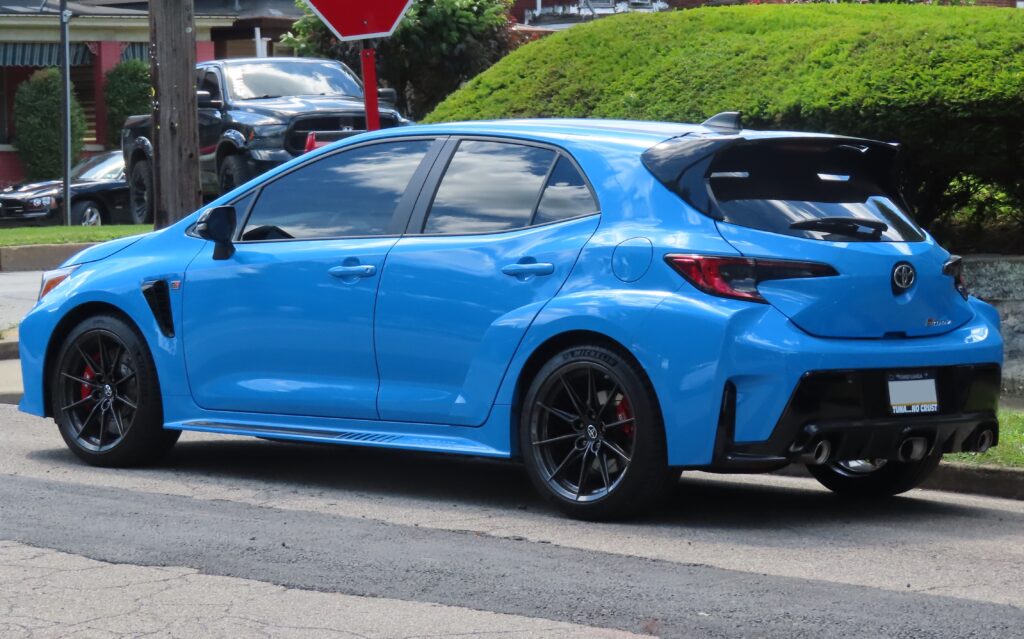
11. **2024 Toyota GR Corolla**Alright, prepare yourselves, because here’s another curveball we absolutely didn’t see coming from a relatively conservative automaker like Toyota! But they did it, and the automotive world is richer for it. The resulting GR Corolla isn’t just a car; it’s a glorious Frankenstein’s monster, a thrilling cross between a dearly departed Mitsubishi Evolution and a legendary Focus RS, blending their best attributes into one phenomenal package. This car is pure, unadulterated madness in the best possible way!
Up until recently, the Toyota GR Corolla held true to its enthusiast roots, coming as manual-only. While that might have changed for some variants, the heart of the beast remains: a sensational three-cylinder, 300-hp engine. For those quick with math, that’s a jaw-dropping 100 hp per cylinder – pure, glorious madness! And let’s not pretend the base Corolla hatchback is the most practical vehicle ever, but you still get more cargo space than its sedan sibling. Plus, with the clever rear seat-delete option, you can actually fit four tires back there, ready for your next track day adventure.
While its straight-line performance is more than respectable, clocking a 0-60 in 4.9 seconds and a quarter-mile in 13.5 seconds at 104.2 mph, this car truly comes alive when you’re thrashing it through corners. That’s where the GR Corolla shines brightest, delivering a driving experience that’s pure automotive poetry. Our first test review lauded its incredible agility: “Our best figure-eight lap tripped the clock at 24.9 seconds at 0.76 g average.”
The review continued with praise for its exceptional precision: “The gears happened to align well for our course; downshifting with the Intelligent Manual Transmission’s (iMT) rev-matching was flawless and accurate. The six-speed gearbox had sharpshooter precision, and missing a gear never even crossed our minds.” With its lightweight construction, exceptional handling, and sticky 235/40 18-inch Michelin Pilot Sport 4s wrapping the wheels, the GR Corolla averaged an incredible 0.95 g around the skidpad. This car is a rally-bred monster disguised as your everyday compact, offering incredible precision and power in a surprisingly practical package.
Car Model Information: 2024 Mazda CX-5 2.5 S Carbon Edition
Name: Toyota GR Corolla
Caption: 2024 GR Corolla Circuit Edition (Canada)
Manufacturer: Toyota
ModelCode: GZEA14
Production: 2022–present
ModelYears: 2023–present
Assembly: Unbulleted list
Designer: Sungwon Lee and Masayuki Sugiura
Class: Hot hatch
BodyStyle: hatchback
Layout: Front-engine, four-wheel-drive
Platform: Toyota TNGA-C platform
Related: Unbulleted list
Engine: Unbulleted list
Powerout: cvt
Transmission: unbulleted list
Wheelbase: cvt
Length: cvt
Width: cvt
Height: cvt
Weight: cvt
Sp: us
Categories: All-wheel-drive vehicles, All Wikipedia articles written in American English, All articles with unsourced statements, Articles containing Japanese-language text, Articles with short description
Summary: The Toyota GR Corolla (Japanese: トヨタ・GRカローラ, Hepburn: Toyota Jīāru Karōra) is a compact car manufactured by Japanese marque Toyota since 2022 with assistance from the company’s Gazoo Racing (GR) division. It is a hot hatch variant of the E210 series Corolla.
The GR Corolla was introduced on March 31, 2022. The GR Corolla is built mainly for the North American market as Europe received the GR Yaris (which is not sold in Canada and the United States). Both vehicles are assembled at the “GR Factory” inside the Motomachi plant, a production line dedicated to GR-branded vehicles. Aside from North America, the GR Corolla is also sold in Japan, Thailand, Malaysia, Australia, New Zealand, Brazil, South Africa, and Indonesia.
Beginning in 2026, the GR Corolla for the North American market will be produced in Burnaston, England.
Get more information about: Toyota GR Corolla
Buying a high-performing used car >>>
Brand: Toyota Model: GR Corolla
Price: $25,958 Mileage: 26,006 mi.
Read more about: Remember These? 14 Classic Cars From the 1980s That Everyone Forgot About (But Are Now Worth a Fortune!)
12. **Volvo C30**Alright, folks, it’s time for a special shout-out to a car that might not always make the ‘top 10’ lists but absolutely deserves its moment in the spotlight: the quirky, cool, and surprisingly fun Volvo C30. This beauty was undeniably way ahead of its time in terms of design, even earning a spot of honor in the *Twilight* saga (yes, really!). It makes us yearn for the days when Volvo wasn’t just safe and sensible, but dared to be a little rebellious, a little *fun*. Oh, and get this, there was even a Polestar version!
Back in 2006, Volvo truly went out on a limb, launching one of its bravest and most distinctive cars in recent memory. The C30 was a deliberate homage to the revolutionary design of the P1800 ES, an iconic shooting brake, and let me tell you, it was a bona fide head-turner, especially from the rear. While the front showcased Volvo’s signature Scandinavian minimalism – simple headlights, an upright grille – it was from the side and back that the C30 truly captivated. The rear shoulders emphasized its compact, athletic proportions, flowing seamlessly into a streamlined, integrated design.
But it’s the rear, oh that glorious rear, where the C30 really shone! Its unique glass hatch, a direct and loving nod to the P1800 ES, gave Volvo’s small hatchback an incredibly distinctive, eye-catching vibe that made it instantly recognizable. This dramatic, tapering roofline further emphasized its sporty appearance, making it look sleek and purposeful. It was a refreshing departure from the norm, proving that a practical car could also be a work of art.
And thankfully, this stunning design wasn’t just a pretty face; the C30 also received a high-performance version! Dubbed the C30 T5, it packed a punch with a 2.5-liter five-cylinder turbocharged engine, churning out a solid 227 hp and a healthy 236 lb-ft of torque. You could even get it with a six-speed manual or automatic transmission, though it was only available in front-wheel-drive configuration. The C30, especially in T5 guise, beautifully proved that even a brand renowned for safety could deliver a truly distinctive, fun, and dare we say, ‘awkward’ hot hatch experience that turned heads and subtly hinted at a wilder side.
Car Model Information: 2012 Volvo C30 T5
Name: Volvo C30
Manufacturer: Volvo Cars
Production: 2006–2013
ModelYears: 2007–2013 (Canada),2008–2013 (US)
Assembly: Ghent
Predecessor: Volvo 480
Successor: Volvo V40 (P1),Volvo EX30
Class: Subcompact executive car
BodyStyle: hatchback
Layout: Front-engine, front-wheel-drive layout
Platform: Volvo P1 Platform
Engine: ubl
Transmission: ubl
Wheelbase: cvt
Length: 2007–2009:,{{convert,4252,mm,in,1,abbr=on
Abbr: on
Width: cvt
Height: cvt
Weight: cvt
Related: Ford Focus (second generation, Europe),Mazda3#First generation (BK; 2003),Volvo S40#Second generation (2003–2012),Volvo V50
Designer: Simon Lamarre
Categories: 2000s cars, 2010s cars, All articles that may contain original research, Articles that may contain original research from September 2007, Articles with short description
Summary: The Volvo C30 is a three-door, front-engine, front-wheel-drive premium compact hatchback manufactured and marketed by Volvo Cars from 2006 to 2013, in a single generation. Powered by inline-four and straight-five engines, the C30 is a variant of the Volvo S40/V50/C70 range, sharing the same Ford C1/Volvo P1 platform. Volvo marketed the C30 as a premium hatchback / sports coupe.
The C30’s rear styling and frameless glass rear hatch recall Volvo’s earlier P1800 ES and Volvo 480.
Get more information about: Volvo C30
Buying a high-performing used car >>>
Brand: Volvo Model: C30
Price: $5,990 Mileage: 142,024 mi.
Read more about: 13 Iconic 1980s Classics: Unearthing Automotive Treasures Whose Values Are Soaring for Collectors
This journey through the world of ‘awkward’ hot hatches has been a total blast, right? From the plucky pioneers to the modern-day monsters, these cars prove that you don’t need a massive footprint or a sky-high price tag to have an absolute riot behind the wheel. They’re the unsung heroes, the unexpected joy-bringers, and the cheeky rebels of the automotive world. Whether you’re hunting for a used gem or eyeing a brand-new track star, the spirit of driving enthusiasm is alive and kicking in these compact powerhouses. So, go on, embrace the awkward, and find your next favorite grin-inducing ride!

